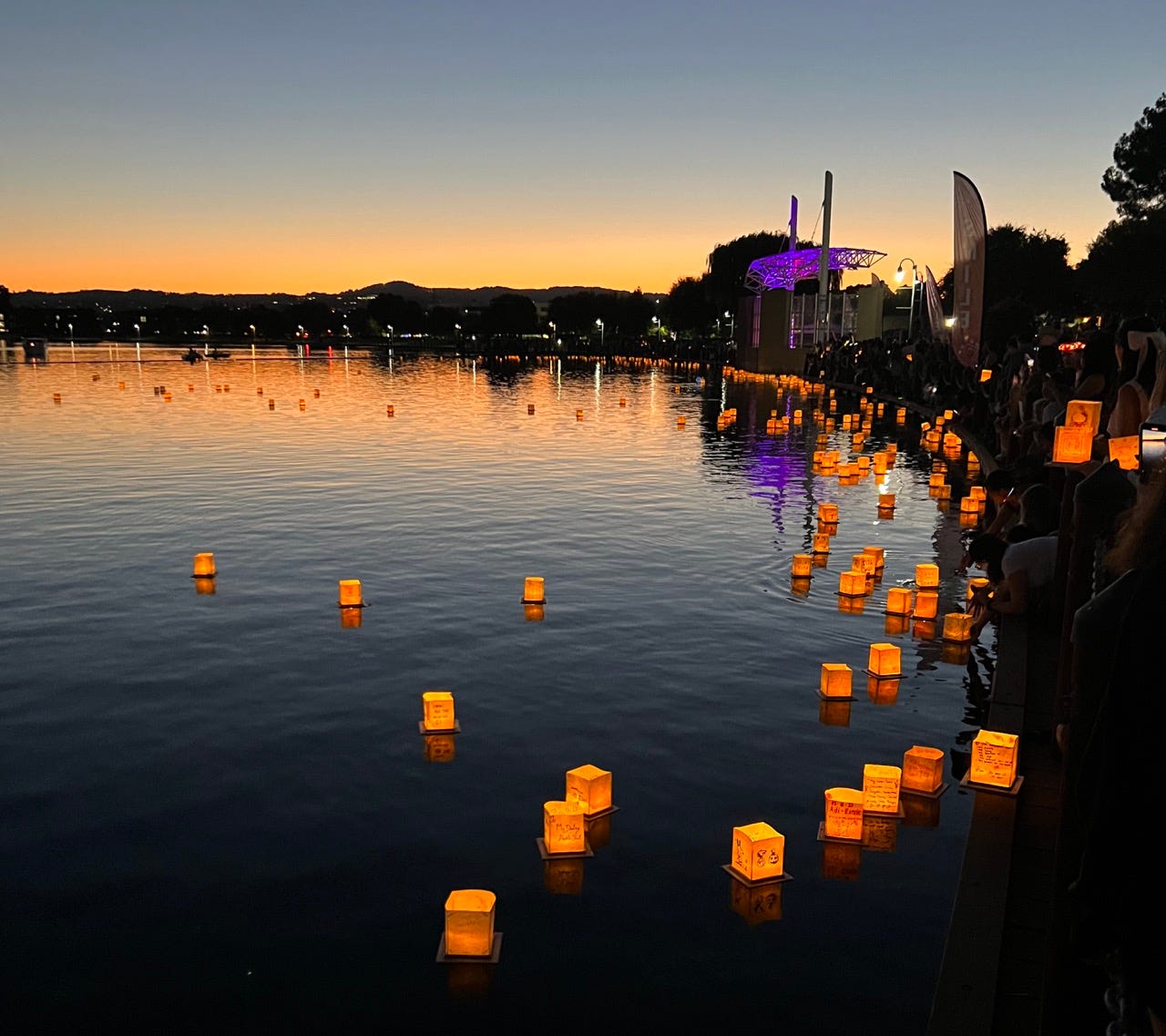Setting intentions is good for our mental health
By Jeni Olsen
NAPA VALLEY, Calif. — Every January, I meet with friends to create a vision board for the new year. It’s a tradition I look forward to as it gives me time to reflect on the past year and set intentions for the new year. I used to set New Year’s resolutions but find vision-boarding more fulfilling as it helps me understand myself, appreciate my growth and set gentle expectations for the year ahead.
Our process involves a lot of magazines, nourishing food and drinks, and a quiet, comfortable space in one of our homes. We start by reviewing the previous year and sharing what we felt good about, and then we ground ourselves in the process of setting intentions for the new year. My board always includes photos of nature (my healing place), health and wellness goals, photos and phrases about how I’d like to show up with my family, friends and in my career. Every year I strive for better balance, and every year I inch a little closer to a better work-life balance.
Intention-setting doesn’t have to happen on Jan. 1. It can happen any time of the year. To help us learn more about the power of setting intentions and how it can be good for our mental health, I’ve interviewed Elizabeth Celaya, a therapist at Mentis who works with people of all ages. She shared the following with me.
Please share about the work you do at Mentis.
I work as a mental health therapist at Mentis, and in that capacity, I wear several different hats. For most of the week I work at the clinic, where I meet with various kinds of clients that include couples, families and individuals. I also meet with a few minors. Once per week I work at Napa High School as a therapist. I have a caseload of about five students on that day. Intermittently, I work as a therapist with Mentis’ Healthy Minds-Healthy Aging program, where I meet with older adults. I enjoy working with clients of various ages because I learn so much from meeting people in their different stages of life. It enriches my own life with meaning.
After working as a paralegal in my husband’s firm for a decade, I decided to go back to school. A month after school started the world shut down due to COVID-19. I was enrolled in a master’s program online, which allowed me to continue going to school throughout the pandemic while also being available to my kids, who were still at home. My intention was to become a marriage and family therapist, and that is exactly what I now do at Mentis. One of the things that drew me to becoming a therapist was the ability it would give me to empower women in their marriages and families. My family was very supportive of my decision to go back to school, and my hope is that more women can feel supported to chase their dreams.

What is intention-setting, and how can it support our mental health?
Intention-setting is less specific than goal-setting. It involves focusing our thoughts on what we want to do or how we want to be and grounding in the present moment, whereas goal-setting is future-oriented. Intention-setting can be considered the mental and emotional work of reaching goals. It’s a commitment to ourselves and encompasses the reasons why we do something.
Before I have a session with a client, I always set an intention for how I hope that session will go. I also work with my clients to set intentions for their treatment process. These intentions often become a part of their treatment plan. Having clear intentions can give us focus and fill us with hope.
When is the best time to set intentions?
The beginning of something is a good time to set an intention because it gives us a clear starting point, which is why it is popular to set intentions at the beginning of a new year or on the first day of the week. However, I believe the best time to set an intention is whenever you want to. Having a desire to make a change or work toward a goal is the most important factor in achieving that goal. It’s important to set intentions you believe in and truly want to achieve and that are within your capabilities. Motivation for intentions can come from a need for change, an obstacle you are working to overcome or a time of deep challenge. It can also come from inspiration, a calling or the simple desire for self-improvement. When motivation strikes, that is the best time to set an intention. Keep in mind what is in your own circle of control and what work you are willing to do to create change in your life. Setting any intention outside of these two considerations will likely cause stress or anxiety, which counteracts the work of intention-setting. Most importantly, be gentle with yourself and celebrate small successes along the way.
How can creating a vision board help the process of setting intentions?
Vision boards are a fun way to work with intention-setting. A vision board is a collage or poster of words and pictures that represent our intentions. For individuals who are visual, being able to see their intentions laid out in front of them can provide clarity and focus. For people who enjoy being artistic, the process of creating the board can be an exciting experience. For others, creating vision boards can be a new experience altogether. Wherever you land in the realm of cutting, pasting and drawing, a vision board is unique and individual to you and does not need to measure up to any standard. It is about self-discovery. It is about understanding and expressing yourself only.
Once you have a vision board, how do you use it?
Vision boards should be displayed in a place where you can be reminded regularly of your intentions. This may be in your home, your office, at your desk — anywhere you will see it daily to be reminded of your intentions. Some people take a photo of their board and keep it in their phone as a visual reminder.
What are other ways we can set intentions?
Other ways of setting intentions can include repeating mantras during meditation or as part of a daily routine, writing them in list form in a journal, transforming them into a work of art (a poem, a song or a painting), sharing them with a close friend or family member (in conversation or in a letter), or talking about them with your therapist.
Last year my family participated in a lantern ceremony where we wrote intentions on the sides of floating lanterns and released them into a lagoon. As we watched them float away with hundreds of other lanterns we felt a unity with those participating, and it added a touch of magic to the experience.
How can family be part of the intention-setting process?
Every Jan. 1, my family pulls out a box of magazines, some scissors and glue, and spends the evening creating vision boards together. This has become a meaningful family tradition as we share our intentions with each other during the process and notice how they differ and how, in many ways, they align. As a family, we are all individuals with our own paths who also collaborate with each other to reach common goals. Sharing our intentions with each other strengthens our relationships and helps us to know and understand each other better.
One of the things we do together is run. We have participated in races together as a family and supported each other in different racing goals. My son and his wife ran a half-marathon with my daughter. My husband and I have also run a half-marathon together. We traveled to Puerto Rico to support another son as he did a half-ironman. My twins love to run cross country and track. Running is something we all like to do, and we intentionally stay connected and support each other in our individual and collective goals. When our family gets together for holidays, a run is often part of our tradition.
My vision board lives in my bedroom, where I can see it as I get ready every morning. This helps me set the tone and navigate my busy days from a grounded, calm place. My focus for 2024 is radical self-care and a commitment to my own well-being. Over the years, I’ve realized that I cannot pour from an empty cup, and this self-awareness has been key to designing a life where I can both give and receive. I hope this article inspires you to explore intention-setting, which has been transformative in my relationships and in my work.
If you or someone you love is experiencing a mental health crisis, call or text the 988 Suicide and Crisis Lifeline.
If you or someone you love needs mental-health or wellness support, please visit our Mentis Youth Resource Database. Mentis is one of Napa’s oldest nonprofits and provides bilingual, affordable mental-health services to people of every age and income level.
If today's story captured your interest, explore these related articles:
Mentis wellness tips: Finding space for quality family time during the holidays
Supporting youth mental health: how it started, how it’s going
As the founder of Teens Connect and director of Mentis’ Prevention Division, Jeni Olsen manages youth wellness programs through a mental health lens together with local teenagers and her Prevention team. As a director, speaker and writer, Olsen is often sought out for her in-depth expertise around teens and her forward-thinking, collaborative approach to supporting youth and their complex needs.








I love these interviews. Thank you!